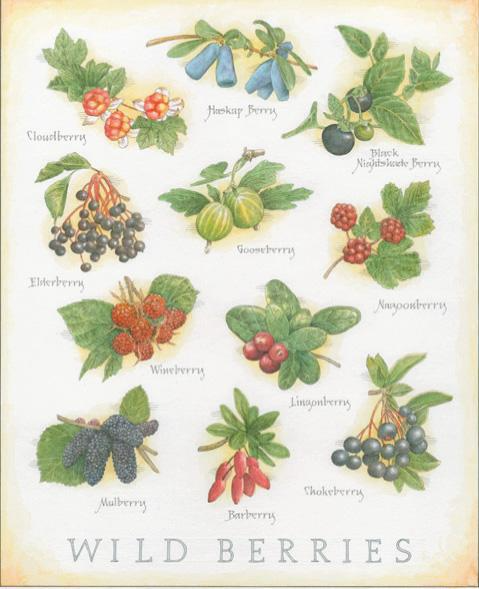Wild Berries
Wild Berries

For juicy, plump, downright kaleidoscopic summer berries, look not to the familiar varieties in the produce aisle but to their relatives growing wild in forests and marshes across the country. CHOKEBERRIES get their name from the berry’s intense tartness, but tempered with some sugar, the fruit makes pleasantly bright jelly. Tiny ELDERBERRIES ripen quickly and often ferment on the bush, so they’re ideal for wine making. Because silk moths eat MULBERRIES, the plant came to the American colonies in a failed attempt to establish a silk industry. GOOSEBERRY fool is a traditional dessert combining the translucent-green berries with swirls of cream and BLACK NIGHTSHADE BERRIES are closely related to poisonous deadly nightshade, but they are edible when they have ripened to a dark purplish-black hue. Jam made from the LINGONBERRY, a Scandinavian import to the northeast and northwest coasts of the United States, is a sweet-tart topping for rich meat or game. Be careful picking BARBERRIES—the red fruits are pleasantly puckery, but the plant’s leaves and nodes are riddled with spines, some of which can measure a centimeter long. Versatile HASKAP BERRIES, which some say taste like a combination of raspberries, blueberries, and strawberries, are a stunning addition to pies, crumbles, and muffins. WINEBERRIES may be the most beautiful of the bramble fruits (berries composed of small drupelets), but the fast-growing shrub is considered invasive in several states. A relative of the wineberry, the juicy, floral CLOUDBERRY grows almost exclusively in cold regions, such as the tundra and forests of Alaska. The 49th state is also home to the prized, but elusive, NAGOONBERRY, whose name comes from the word for ‘jewel” in the language of the Tlingit, a Pacific Northwest Indigenous people.